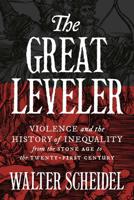Publisher's Synopsis
An examination of the European witch-hunt, from the accusation, prosecution and execution of thousands of persons for the crime of witchcraft between 1450 - 1750. Attempting to explain why the great European witch-hunt took place, and the reasons for its climax in the late-16th and early-17th centuries, this study explores also explores possible reasons as to why it was more severe in some countries than in others and why it came to an end.;In discussing the witch-hunt, the author aims to emphasize its complexity and diversity. In addition to the four chapters devoted to the different causes of witch-hunting throughout Europe, chapters cover the two main preconditions of the great hunt: the formation of the cumulative concept of witch-craft; and the development of the legal procedures that were capable of convicting witches in large numbers. General religious and social developments which served as inducements to witch-hunting are examined, as well as specific cases.;Thus, the book's purpose is to explain why individual hunts began and to show the different ways they developed and finally ended. Reasons for the uneven chronological and geographical distributions of prosections are examined, as are the legal, intellectual, religious and social developments that resulted in the eventual reduction of the number of prosecutions.;This second edition has been updated and expanded.









